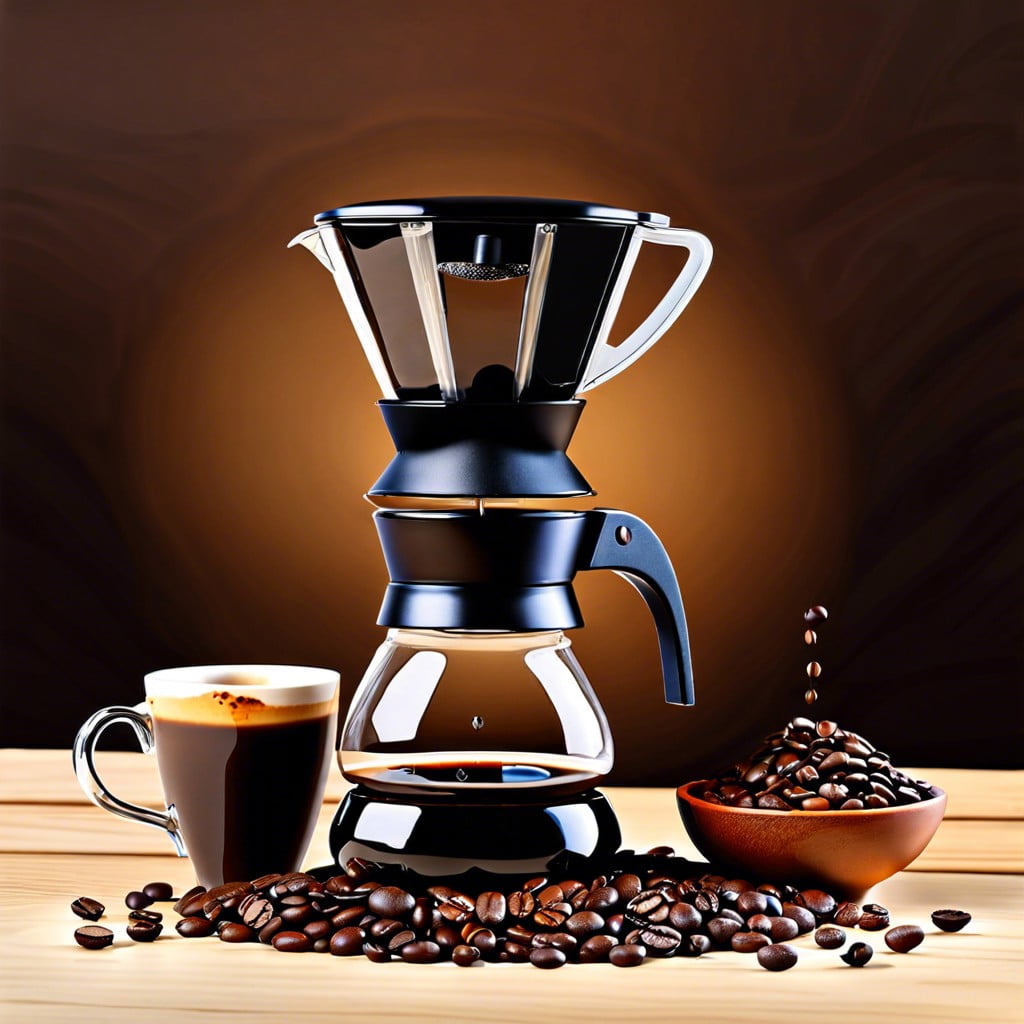Learn the straightforward steps to brewing the perfect cup of drip coffee at home.
The Equipment

Selecting the right gear is like picking the perfect paintbrush for a masterpiece. A drip brewer, be it automatic or manual, sits at center stage. Whether you go for the convenience of an electric machine or the control of a pour-over setup, make sure it’s one you’re thrilled to use every day.
Grinders matter too—burr grinders win the race against blade ones, granting consistently sized grounds that make all the difference. Keep a scale on hand as well to nail down the exact measurements. Trust me, your taste buds will thank you.
Consider your filter choice; paper ones are single-use and can be composted, while metal filters are reusable and offer a different flavor profile, letting more oils through. Lastly, a clean carafe or decanter is crucial for preserving that fresh brew flavor. Treat these tools well and the payoff is a daily delight in a cup.
The Beans
Choosing the right coffee beans is a pivotal step in conjuring a marvelous cup of drip coffee. Opt for whole beans and grind them freshly before brewing to capture the full flavor profile. Arabica beans, known for their smooth, complex taste, are a common choice among connoisseurs. On the flip side, Robusta beans pack a punch with higher caffeine content and a bold, assertive flavor.
Roast levels significantly impact taste; light roasts sing with vibrant acidity, but as the roast darkens, so does the flavor, bringing out rich, caramelized notes. Remember, great coffee isn’t just about grand origins or exotic names; it’s about what tickles your palate. Trust your taste buds, and don’t shy away from experimenting with different beans to find your perfect match.
Coffee-to-Water Ratio
Hitting the sweet spot with your coffee-to-water ratio can take your brew from “meh” to “more please” with just a little adjustment. Think of it as the recipe for your perfect cup of joe. Too much water, and your coffee is a weak shadow of what it could be. Skimp on the grounds, and you’ve got yourself a coffee so strong, it might just growl at you.
The golden ratio for a balanced drip coffee is about 1 to 2 tablespoons of coffee per 6 ounces of water. This is a fantastic starting point, but like any good rule of thumb, it’s bendable to your taste. Love a richer cup? Add a little more coffee. Prefer it lighter? Ease up on the scoop.
Remember, consistency is your friend here. A reliable scale could be the trusty sidekick you didn’t know you needed, taking guesswork out of the equation. Measure your coffee, measure your water, and you’re on the fast track to a reliably delicious brew. Keep in mind, the quality of water plays a role too—filtered water can lead to a purer tasting cup.
Fine-tune these variables and observe. With a bit of tweaking, you’ll get that high-five worthy cup every single time.
Water Temperature
Ideal water temperature for brewing drip coffee hovers between 195°F and 205°F. Lower temperatures can result in under-extraction, yielding a flat or sour taste, while anything too hot risks over-extraction, which can bring out unwelcome bitterness.
Achieving this desired range can be a simple matter of utilizing a kettle with a built-in thermometer. For those without such a device, bringing water to a boil and then letting it sit for about 30 seconds usually hits the sweet spot.
Inconsistent heat leads to inconsistent brews. Therefore, consider the material of your coffee maker, as plastic machines can lose heat rapidly, adversely affecting the extraction process.
Remember, temperature precision elevates the overall quality of your cup. Paying attention to heat can transform a good morning ritual into a great one.
How to Clean a Drip Coffee Maker
Keeping your drip coffee maker spick and span doesn’t just prolong its life; it also means a better-tasting brew. Start with these simple points:
Disconnect your coffee maker before you begin. It’s a no-brainer but worth the reminder for safety.
Begin with the removable parts: the carafe and the filter basket. Soak them in warm, soapy water and give them a good scrub. For any stubborn stains, a little baking soda does wonders. Rinse thoroughly after.
Next up, tackle the water reservoir. Fill it with equal parts water and white vinegar. Run a brewing cycle halfway, then pause for an hour. This allows the vinegar to work its magic and descale the insides. Resume the cycle and let it complete.
Flush out the vinegar by running a cycle with fresh water at least once or twice. This will eliminate any remaining vinegar taste.
Wipe down the exterior with a damp cloth. Don’t forget the hot plate, where spills can burn and stick.
For a deep clean, use a damp cotton swab to clear out any coffee grounds from the nooks and crannies.
Keep in mind that regular cleaning, after every use for certain parts, and a deeper clean monthly, will ensure your trusty machine keeps churning out heavenly coffee day after day. Remember, a clean coffee maker is a happy coffee maker, and happy coffee makers make happy coffee drinkers.